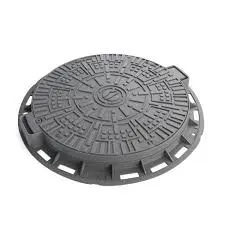Exploring the Design and Functionality of Manhole Covers in Urban Infrastructure and Safety
The Shape of Manhole Covers A Fascinating Study in Design and Functionality
Manhole covers are often overlooked elements of urban infrastructure, yet they present an intriguing blend of practicality and design. Typically made from cast iron or composite materials, these covers are designed not only to provide access to underground utility systems but also to ensure public safety. One of the most interesting aspects of manhole covers is their shape, which raises questions about engineering, aesthetics, and societal norms.
The Shape of Manhole Covers A Fascinating Study in Design and Functionality
The uniformity of circular manhole covers also facilitates mass production. Since these covers are produced using molds, a circular shape allows manufacturers to streamline production, leading to lower costs and more efficient use of materials. Furthermore, the rounded edges help distribute weight evenly, making it easier for workers to lift and replace the covers without compromising safety.
manhole cover shape

Despite the practicality of circular designs, there is significant variety in the manhole covers found across different cities. From artistic engravings that celebrate local culture to varying colors and materials, manhole covers can be remarkable points of interest. Some cities even employ artists to design unique covers that reflect their heritage, transforming utilitarian objects into public art. This trend not only beautifies urban landscapes but also fosters community pride and identity.
The discussion surrounding manhole cover shapes also highlights the intersection of engineering and design. While circular covers dominate in practicality, some urban areas have experimented with alternative shapes to maximize space or enhance aesthetic appeal. For example, square or rectangular designs can be more space-efficient in certain contexts, fitting neatly into the grid-like patterns of city streets. However, engineers must carefully evaluate the implications of these designs for safety and functionality.
Moreover, the materials used in manhole covers have evolved, expanding beyond traditional cast iron. Innovations in technology have led to the development of composite materials that are lighter, more durable, and resistant to corrosion. This development allows for greater flexibility in design; urban planners can explore a wider range of shapes and sizes tailored to specific streetscapes or functional requirements.
In conclusion, while the shape of manhole covers may seem trivial at first glance, it embodies a rich tapestry of engineering, art, and societal values. The circular design makes sense from a functional perspective, yet the variations found across different cities challenge our understanding of public infrastructure as purely utilitarian. As cities continue to evolve, so too will the designs of manhole covers, offering a glimpse into the dynamic interplay between functionality and creativity in urban environments. Ultimately, as we navigate our daily lives, it is essential to appreciate these humble yet significant components of our cities—a testament to the fact that even the most overlooked elements can capture the imagination when viewed through the right lens.
-
The Smarter Choice for Pedestrian AreasNewsJun.30,2025
-
The Gold Standard in Round Drain CoversNewsJun.30,2025
-
The Gold Standard in Manhole Cover SystemsNewsJun.30,2025
-
Superior Drainage Solutions with Premium Gully GratesNewsJun.30,2025
-
Superior Drainage Solutions for Global InfrastructureNewsJun.30,2025
-
Square Manhole Solutions for Modern InfrastructureNewsJun.30,2025
-
Premium Manhole Covers for Modern InfrastructureNewsJun.30,2025
